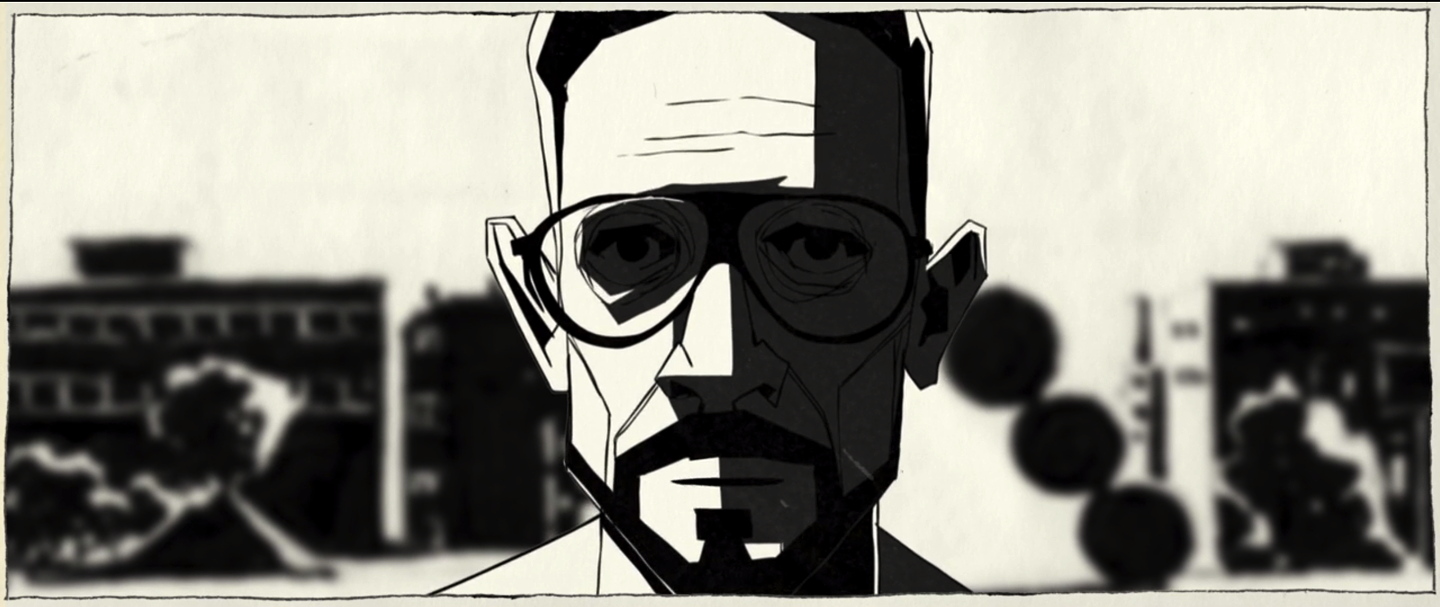Taken from the new double album from Israeli singer Gilad Kahana, Sariel Keslasi’s animated music video for lead track My Africa, harkens back to an era when humanity was free of the crushing expectations of cultural patterns and the demands of the elite over the disempowered masses. Keslasi tells DN how the Tel-Aviv streets and a series of pocket notebooks were pivotal to the realisation of his animated music video.
My first meeting with Kahana was over a year ago when he played me several songs from the double album including My Africa. The entire album deals with questions about ‘rulers and subjects’ and us being slaves in our day to day lives. Although My Africa wasn’t easy there was something about it that captured me. It was an abstract song without a clear statement, there was no concrete narrative, and yet I got the feeling it said something deep. The biggest challenge I had was to place the words in a concrete environment and to illustrate the flow of the song while letting it stay very free and not didactic.
My Africa portrays a wistful thought of returning to a primarily place where no culture exists, a place where the cultural patterns can’t define us. Kahana’s free form dance movements in the video also express that primarily essence we all have in us, representing all of the important things the cultural symbols are making us forget. Analogous to the crumble of the separation we have in today’s life, the disintegrating city gives way to a new start and hope. For me, a crucial component of the film comes in the final scene where everybody stands out in the open, since I wanted to culminate with a hopeful ending and not an ‘apocalypse’ – still holding onto the belief of a better place.
I live in south Tel-Aviv and the city has a big influence on me, it inspires me. If it’s between the north, the centre and the south of the city, the variety of the people who live in it, or the drama between the light and the shadow it holds, Tel-Aviv has a lot of contrasting elements within it which effected the art in the animation. Around the time of my first meeting with Kahana, I used to walk around different places in Tel-Aviv with a small sketch book the size of a passport and sketch the people and buildings I saw. The sketches were small and fast but full with details; it was a kind of diary or document that captured the city’s streets. I was especially interested in the darker areas of the city that I had sketched and the feelings you get through the sketches. The combination of the calligraphic pen and the page texture created a dark, contrasting and documentary atmosphere, which is why I chose to use them in the video. Other than my life in the city, I drew inspiration from the flood scene in Masamune Shirow’s Ghost in the Shell, the biblical flood and from the biblical character Honi ha-M’agel.
I scanned all of the sketches to my computer, dismantled them in to layers and used After Effects to move them. The dance (classic) animation was created in the computer. Afterwards I textured it with scanned textures of the calligraphic pen. The crumble of the city scenes were created by combining several sequences of classic animation with particles in After Effects in order to reduce the computerized feeling I was trying to avoid. My taste in film is mainly of the heavy and slows such as Michael Haneke and Lans Von Trier. Also, my graduation film Altneuland was very slow, that’s why the editing process of this was long and took us a while to get to something more flowing and suitable for a music video.







